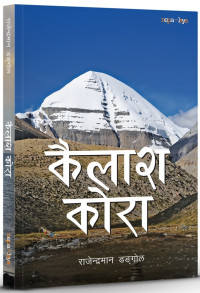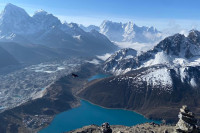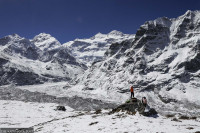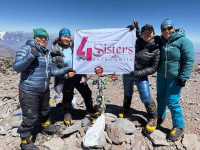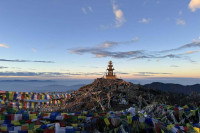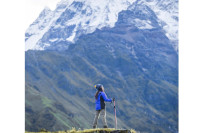Travel
Crawling towards Markhu
Taking the (bumpy) road less travelled to Markhu tested our riding skills and patience, but the reward came in the form of heart-stoppingly beautiful views.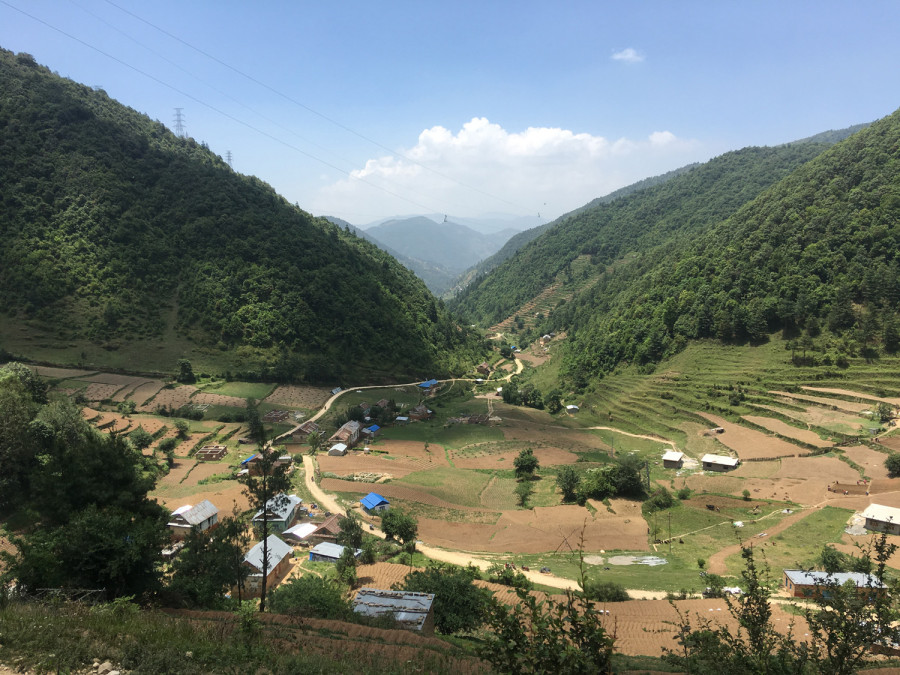
Tsering Ngodup Lama
There are several roads that you can take to reach Markhu village from Kathmandu. The one that offers the best road conditions is the Pharping-Phakhel-Kulekhani route, and it remains the most prefered option for travellers. But the day before we were to head to Markhu, we learned the road was closed for repairs (the route is now open for motorists). Unwilling to change our plans, I made a few phone calls to people who knew locals who travelled to the village frequently. By the end of the day, I, on behalf of our group of three, had decided to ride our motorcycles to Markhu via the Matatirtha-Phakhel road. Those who travelled to Markhu frequently told me the route was good enough for two-wheelers. Little did we know we were setting ourselves up for one crazy, bumpy ride.
Once we crossed the training academy of Armed Police Force at Matatirtha, the road snaked uphill, and within a few minutes, we were riding on a gravelled road deep inside a forest. But the road conditions soon changed. Nearly two kilometres inside the forest, the gravelled road was replaced by a nasty, rocky one that continued to meander uphill, and we found ourselves constantly shifting between the first and second gear. Our motorcycles, ill-equipped for the terrain, slouched under the bruteness of the road. But riding tough off-road comes with its own perks. For most parts of the uphill climb, we were the only motorists on the road, and the only sounds that filled the air were of the grunt of our motorcycle engines and bird songs.
After what felt like an eternity, the bumpy uphill off-road came to an abrupt end, flattening for a few metres, before descending sharply into a valley. Navigating the downhill road was more challenging. Loose rocks and slippery red sand made riding tricky and the road conditions required us to stay focused at all times or risk sliding downhill, but the views improved significantly. Sweeping vistas of luxurious green hills as far as the eye could see and quaint hamlets in valleys wedged between the hills, all with a backdrop of a deep blue sky, more than made up for the challenges the road forced us to deal with.

From the bottom of the hill, the road flattened, and for the first time, I could rev my motorcycle beyond 30 kmph. For the next two hours, we were rewarded for taking the road less travelled as spectacular views unfolded as the road criss-crossed via traditional hamlets with colourful Buddhist prayer flags, cauliflower fields, sleepy village bazaars, and roadside watering holes where inebriated village men downed copious amounts of thick, cloudy chyang from battered steel bowls.
Our last stop before Markhu was at a makeshift rest stop, perched on a sloping hill and overlooking valleys and terraced fields. At the rest stop, an ebullient young man and his toddler daughter had set up shop. There were no pre-packaged snacks or carbonated drinks on sale, but only colourful (black, red, purple) kafals, a wild berry, which the man picked daily from nearby forests. A few dusty motorists from Hetauda and Birgunj, all on their way to Kathmandu, were sitting on the rest stop’s narrow makeshift bench, which wobbled like a loose tooth. We sat with them, munching on sweet, juicy kafals that generously oozed red juice. The loquacious kafal guy also gave us a quick rundown of the many health benefits of the berry and directions to a shortcut to our destination. His toddler daughter refused to speak to us, but continued sheepishly staring at us as we talked to her father. By the time we reached Markhu, we had ridden for four hours, and our bottoms and limbs were sore.
This was my second visit to Markhu, the first one being seven years ago. Then, it was a sleepy village, and my brother and I spent hours fishing. After failing to catch a single fish, we joined a group of village kids who were swimming in the lake. A few buffaloes grazed lazily on the banks of the lake, and there was only one restaurant/grocery store overlooking the lake.
But over the years, tourism seems to have picked up, and that has brought several changes. The village’s only restaurant, which used to be a two-storey building, is now a five-storey building, and serves more than just dal bhat and chowmein. And it isn’t the only restaurant there now. Several restaurants, shops, and a few hotels line the banks of the reservoir, but it is by no means crowded. The buffaloes were nowhere to be seen. But there were several local tourists taking selfies enthusiastically along the banks and on the water, in boats of course. Business, said a local boatman, is booming. “During weekends, we see a lot of picnickers and travellers,” he said. “A lot of those who come here go for boating in the lake, and it’s perhaps the most popular thing to do.”

For those who like to squeeze in as many activities as possible on getaways, heading to Chitlang, which is a three-hour hike or a 45-minute ride away, offers quite a few interesting things to do. The village’s goat cheese factory, run by Ashok Singh, is a must visit. For a nominal fee, Singh (who learned cheesemaking in France more than 15 years ago, and has been making goat cheese in Chitlang for over a decade) gives visitors a tour of his cheese factory and explains his cheesemaking process, in minute detail. Singh also makes plum wine, and both his cheese and wine are available for purchase. A stone’s throw from the cheese factory is a government school, and inside the school premises are two rest houses built by Chandra Shumsher Jung Bahadur Rana some 100 years ago, which could be something of interest for history buffs.
Northwest of Singh’s factory are two of Chitlang’s most important religious sites—Saatdhara (a Hindu site) and Ashok Chaitya (a Buddhist stupa). The Hindu site is located inside a forest, while the Buddhist stupa sits in a square, surrounded by houses. The village’s pear garden also make a scenic backdrop for Instagram posts.
If you are the kind who likes to spend your getaways at an unhurried pace, you will be in your element in Markhu. There are many secluded spots by the banks of the reservoir, and they make for great spots to take naps, read, and swim. Once the sun sets, you can head to one of the many restaurants that line the banks, and order freshly caught fish from the lake along with a chilled beer. The only sound you are likely to hear are of the waters of the lake lapping against the banks.
Where to stay
There are several hotels in Markhu, but one of the better places to stay at is De Lakeside Simlang Hotel. The hotel has a mid-sized swimming pool, and many of its rooms come with balconies offering gorgeous views of the reservoir and surrounding hills. Prices start from Rs 2,300 per person and includes three meals and snacks.
Contact: 9851114149




 14.12°C Kathmandu
14.12°C Kathmandu
